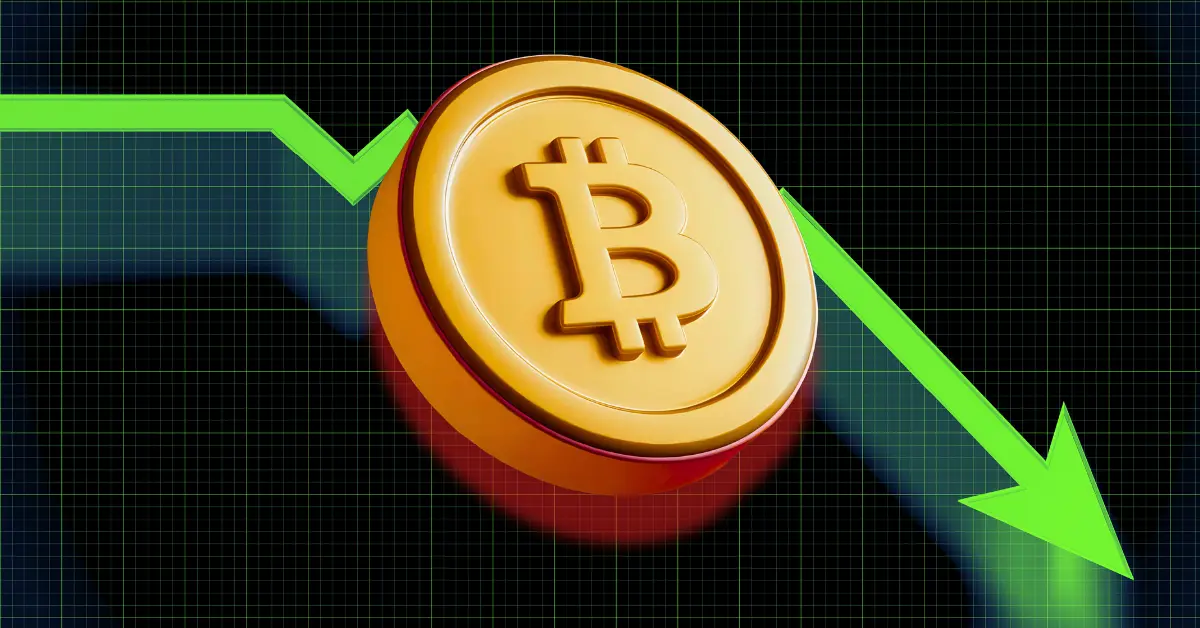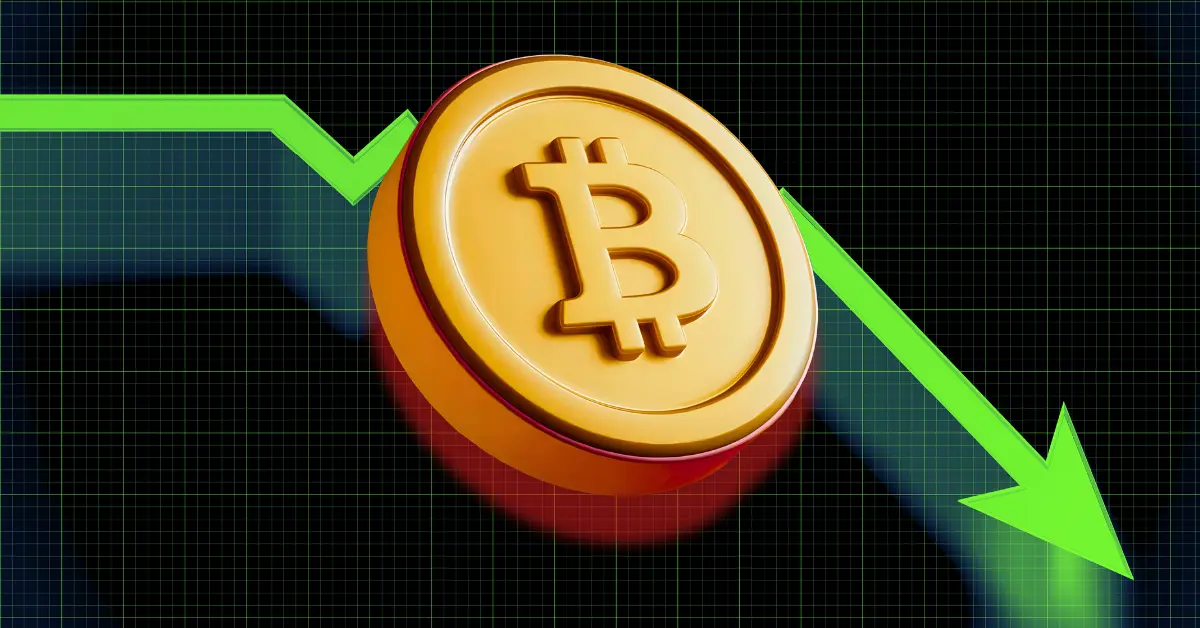The Specter of Sub-$100K Bitcoin: A Deep Dive into Market Anxieties and Analytical Forecasts
Introduction: The Bitcoin Conundrum
Bitcoin, the pioneering cryptocurrency, has long been a barometer of market sentiment, reflecting both the euphoria of bull runs and the despair of bear markets. As the digital asset navigates a period of heightened volatility, the question of whether it will fall below the psychological barrier of $100,000 has become a focal point for investors, analysts, and enthusiasts alike. This report explores the multifaceted factors contributing to this uncertainty, dissecting technical patterns, macroeconomic influences, and market dynamics to provide a comprehensive analysis of Bitcoin’s near-term trajectory.
The Rising Wedge and Bearish Divergences: Technical Red Flags
Technical analysis often serves as the first line of defense in predicting market movements, and Bitcoin’s recent price action has raised several red flags. One of the most concerning patterns is the “rising wedge,” a formation that typically signals a trend reversal. This pattern occurs when the price consolidates between two upward-sloping lines that converge, initially appearing bullish but often preceding a sharp downward break. Captain Faibik, a prominent crypto analyst, has repeatedly warned about the potential breakdown of this formation, suggesting that a decisive close below the $113,000 level could trigger a significant sell-off, potentially pushing the price below $100,000.
Adding to the bearish sentiment, analysts have identified “bearish divergences” in Bitcoin’s Relative Strength Index (RSI). An RSI divergence occurs when the price makes new highs or remains high, but the RSI fails to follow suit, signaling weakening momentum. Captain Faibik highlighted a “massive RSI bearish divergence,” indicating that buying pressure is waning despite the price remaining relatively high. This divergence suggests a potential looming correction, as the market may be losing the momentum needed to sustain upward movement.
Furthermore, the $116,000-$120,000 range has consistently failed to produce significant bullish breakout momentum. This inability to sustain upward movement suggests a lack of conviction among buyers at these higher levels, reinforcing the bearish outlook. The combination of these technical indicators paints a picture of a market that is increasingly vulnerable to a downward correction.
Macroeconomic Storm Clouds: Tariffs, War, and Weather
Beyond the technical analysis, several macroeconomic factors are contributing to the bearish sentiment surrounding Bitcoin. These factors, often intertwined, paint a picture of global uncertainty that is weighing on investor confidence.
Geopolitical Tensions
Escalating tensions in the Middle East are creating a risk-off environment, leading investors to seek safe-haven assets and reduce exposure to riskier investments like Bitcoin. As the world watches potential conflicts unfold, investors tend to reduce their exposure to volatile assets, preferring the stability of traditional safe havens such as gold or government bonds. This shift in investor behavior can exacerbate the downward pressure on Bitcoin’s price, as risk appetite diminishes.
Miner Selling Pressure
Bitcoin miners, essential to the network’s operation, are facing increasing pressures. Rising energy costs, regulatory uncertainties, and increased competition are squeezing their profit margins. As a result, some miners may be forced to sell their Bitcoin holdings to cover operational expenses, adding to the selling pressure in the market. This miner sell-off can further exacerbate the downward trend, as the supply of Bitcoin available for sale increases.
Cautious Investor Sentiment
Overall, investors are displaying a cautious attitude towards Bitcoin. Negative funding rates, where traders pay to keep their short positions open, suggest that a significant number of traders are betting against Bitcoin. This, coupled with the aforementioned macroeconomic anxieties, creates a self-reinforcing cycle of fear and selling. As more investors adopt a bearish stance, the market becomes increasingly vulnerable to a downward spiral.
Liquidity Crisis
The fear of a liquidity crunch is also contributing to the uncertainty. If investors rush to exit their positions simultaneously, the market could experience a liquidity squeeze, making it difficult to sell Bitcoin at desired prices and potentially accelerating the downward spiral. This liquidity crisis can amplify the impact of selling pressure, leading to a more pronounced price decline.
The PO3 Trap and Whale Activity: Decoding Market Manipulation
Analysts also point to potentially manipulative market behaviors contributing to the uncertainty. The “PO3 trap,” where “smart money” may have exited near the highs, suggests that sophisticated investors may have already taken profits, leaving less experienced traders holding the bag. This pattern, if confirmed, further reinforces the idea that the recent price action may be unsustainable.
Large-scale Bitcoin holders, often referred to as “whales,” can significantly impact the market with their trading activity. Recent reports of whale sell-offs are raising concerns about a potential shift in sentiment among these influential players. If whales are unloading their Bitcoin holdings, it could signal a lack of confidence in the asset’s future prospects and trigger a broader market sell-off. The actions of these whales can have a disproportionate impact on the market, as their large holdings can move the price significantly.
Alternative Perspectives: Institutional Inflows and Long-Term Optimism
While the prevailing sentiment appears bearish, it’s important to acknowledge that some analysts maintain a longer-term bullish outlook on Bitcoin. They point to rising institutional inflows as a sign of growing mainstream adoption. The entry of large institutional investors into the Bitcoin market could provide a more stable base of support, mitigating the impact of short-term volatility. Institutional investors, with their deep pockets and long-term horizons, can bring stability to the market, reducing the impact of short-term fluctuations.
Furthermore, proponents of Bitcoin emphasize its potential as a hedge against inflation and a store of value in an increasingly uncertain world. They argue that Bitcoin’s limited supply and decentralized nature make it an attractive alternative to traditional assets, particularly in times of economic turmoil. As central banks around the world continue to print money and inflate their balance sheets, Bitcoin’s fixed supply of 21 million coins becomes increasingly appealing as a hedge against inflation.
Ryan Lee, chief analyst at Bitget Research, observed that Bitcoin’s inability to stabilize immediately after its initial drop below $99,000 signaled weakness. This observation underscores the importance of price stability in maintaining investor confidence. A failure to stabilize can lead to a self-reinforcing cycle of selling, as investors lose confidence in the asset’s ability to recover.
The Case for a More Drastic Fall: $10,000 as a Doomsday Scenario
While most analysts are focusing on the sub-$100,000 range, some are entertaining even more pessimistic scenarios. Bloomberg analyst Mike McGlone, for instance, has warned of a possible crash to $10,000. This extreme prediction is based on the idea that Bitcoin is currently trading far above its intrinsic value and that a significant correction is overdue. While this scenario is less likely than a drop to around $90,000, it highlights the potential for further downside risk.
Veteran trader Peter Brandt highlights a Double Top pattern forming on Bitcoin’s chart. He points out that the first peak occurred above $108,000 in late 2024 and early 2025. The second peak reached $112,000 last month, mirroring the 2021-2022 cycle. He cautions that these patterns suggest that a significant price correction is looming. The Double Top pattern is a well-known bearish reversal pattern, and its confirmation could signal a substantial decline in Bitcoin’s price.
Conclusion: Navigating the Uncertainty
The question of whether Bitcoin will drop below $100,000 remains a subject of intense debate. Technical patterns, macroeconomic headwinds, and market manipulation are all contributing to the uncertainty. While bearish signals are mounting, the potential for institutional inflows and the inherent appeal of Bitcoin as a decentralized asset offer a glimmer of hope.
Brace for Impact
Ultimately, the near-term future of Bitcoin hinges on a complex interplay of these factors. Investors should carefully consider the risks and rewards before making any decisions, and prepare for a period of potentially heightened volatility. Whether Bitcoin finds a stable footing above $100,000 or succumbs to the forces pulling it downward, one thing is certain: the ride will be anything but boring. As the market continues to evolve, staying informed and adaptable will be key to navigating the uncertainties that lie ahead.












